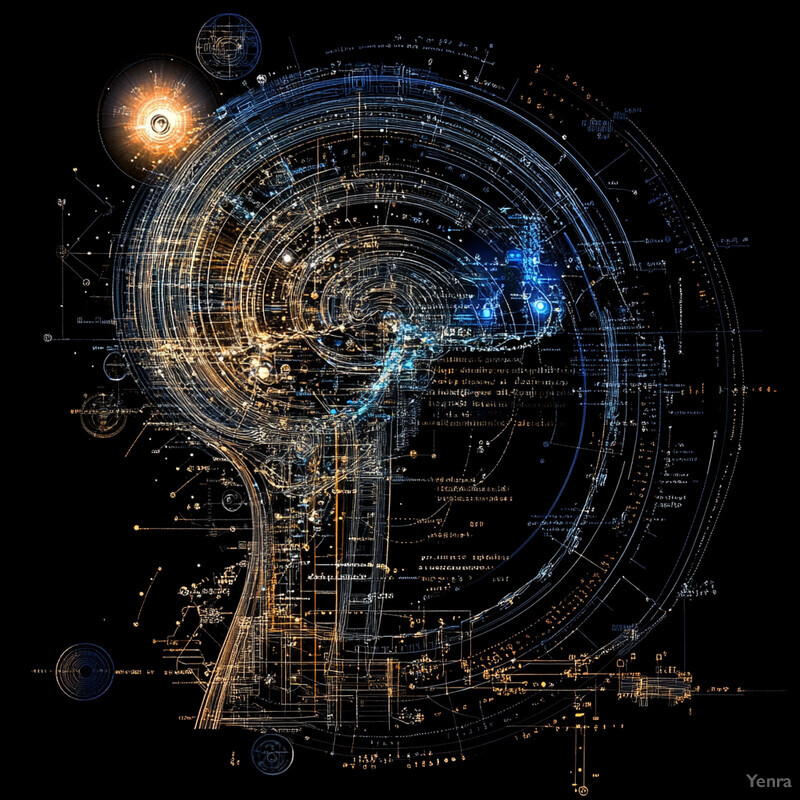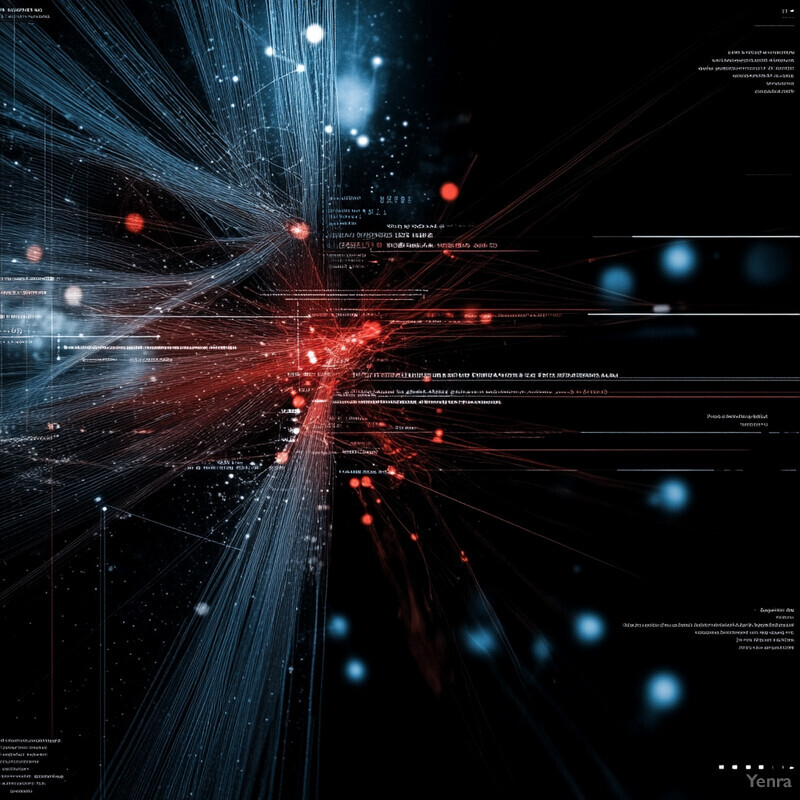1. Automated Claim Detection
Automated claim detection identifies statements that warrant fact-checking, acting as the first filter in fact-check pipelines. It relies on NLP and machine learning to flag factual assertions from text or speech. Modern systems use pretrained language models to capture semantics and context of potential claims. By focusing attention on claims, these tools help fact-checkers prioritize what to verify. Advances in model fine-tuning have improved detection accuracy, but differences in domain or language can affect performance. Overall, automated claim detection has matured into an essential component that streamlines the workload of human fact-checkers.

Recent studies show fine-tuned language models significantly improve claim detection compared to traditional baselines. For example, Sheikhi et al. (2023) report that Norwegian pretrained BERT models achieved higher F1 and recall scores than an SVM classifier on claim detection tasks. A Bangla-language study similarly found that a weighted ensemble of classifiers could flag claims with an F1 score of 0.87 on their dataset. These results indicate current models can effectively “learn” what constitutes a claim for fact-checking. Such claim detectors are viewed as the essential first step in a fact-checking pipeline. Surveys of automated fact-checking note that claim detection typically involves identifying verifiable statements and clustering similar ones to avoid redundant checks. In short, automated claim detection is now a core technology enabling fact-checkers to scale up efforts by focusing only on content likely to be checked.
2. Natural Language Processing (NLP) for Contextual Understanding
NLP techniques provide the contextual understanding needed to interpret claims correctly. Pretrained language models (like BERT, RoBERTa, or GPT variants) use contextual embeddings to capture the meaning of words in their context. This allows a system to recognize nuances in claims and connect them to world knowledge. Some approaches integrate external knowledge sources (knowledge graphs) to give background context. For example, linking terms in a claim to entries in DBpedia or Wikidata can anchor statements in factual databases. These NLP tools help distinguish ambiguous or complex claims by considering context, and they improve with more sophisticated language models. In practice, NLP-driven context analysis helps fact-checkers see when a claim relies on specialized or cross-sentence information.

Researchers have observed that context is critical for accurate fact-checking. Large language models (LLMs) embed broad knowledge but can still fail when deeper reasoning is required. For instance, a recent study on the FactGenius system notes that LLMs may produce vague or incorrect answers for complex claims, implying the need for richer context. FactGenius addresses this by combining an LLM with a knowledge-graph lookup, significantly boosting performance. In experiments, FactGenius (with an LLM guiding a DBpedia query) “significantly outperformed state-of-the-art methods” in verifying claims. This suggests that grounding claims in external context (e.g. structured data) improves accuracy. Other analyses similarly report that incorporating knowledge graphs yields better understanding: knowledge graphs provide structured data that “can enhance the contextual understanding” of LLM-based verifiers. Overall, these results show that contextual NLP – especially methods that fuse unstructured text with external knowledge – is effective for identifying and validating nuanced statements in automated fact-checking.
3. Real-Time Fact-Checking Suggestions
Real-time fact-checking suggestions alert users or journalists to false claims as they appear. These systems typically monitor live streams (video, debates) or social media feeds, detect claims on the fly, and immediately query reference databases or fact-check APIs. The pipeline often includes live transcription (for speech) or text stream analysis to catch statements. Once a claim is spotted, the system suggests possible veracity checks or pulls up relevant fact-check articles. For example, a live video tool might display “fact-check alerts” during a political debate. Such real-time tools accelerate verification by surfacing suspicious claims instantly. They help limit the spread of disinformation by involving fact-checkers earlier. However, building low-latency pipelines with high accuracy (to avoid false alerts) remains challenging.

Early deployments of real-time fact-checkers show they can flag many claims in a short time. In one example, an AI platform transcribing U.S. presidential debate audio detected and categorized 1,123 statements for verification during the live broadcast. Media organizations have piloted systems like “CheckMate,” which transcribes live video, identifies claims, and automatically cross-references a claim database (e.g. Google Fact Check Explorer) on the fly. Another tool, ClaimBuster, uses NLP to highlight factual assertions in text as users type, flagging potential check-worthy content in real time. These examples illustrate the potential: by continuously scanning live streams or feeds, systems can present journalists with emerging claims to verify quickly. In practice, journalists found that live tools (like LiveFC) helped catch important debate claims that might have been missed otherwise. While human oversight is still needed to confirm AI findings, such real-time suggestion tools consistently handle hundreds of claims per hour, greatly speeding up the fact-checking workflow.
4. Credibility Scoring of Sources
Credibility scoring algorithms rate the trustworthiness of information sources. These systems combine signals like past accuracy, expert reviews, and network characteristics to assign a score or label. For example, a tool might award higher scores to outlets with a history of factual reporting and penalize those flagged as untrustworthy. Some approaches are hybrid, using both machine analysis (e.g. content consistency metrics) and human input (editorial ratings). Credibility scores are used to flag dubious sources or highlight credible ones to users. However, algorithmic scoring can be controversial: it depends heavily on the chosen criteria and data. Bias can enter if the training data or model assumptions favor certain viewpoints. Still, when transparently applied, source scoring can guide readers toward reliable information and away from biased or false outlets.

Studies show that automated source ratings only partially align with human judgments. Yang and Menczer (2023) tested LLMs (like GPT) on rating about 7,000 news domains. They found that the models’ ratings “only moderately correlate” with human expert ratings on source credibility. Moreover, the LLMs displayed systematic bias: when primed with a political stance (e.g., a GOP vs. Democrat identity), the machine’s credibility scores skewed toward sources politically aligned with that stance. On the systems side, some platforms combine AI analysis with curated lists to score sources. For example, the NewsCheck system uses a blend of automated checks and editorial review (via a blockchain) to assign trust levels to news outlets. The OpenSources database (compiled by researchers) classifies thousands of websites with labels like “Credible” or “Fake” based on past fact-checkers’ analyses. In practice, these tools reveal that algorithmic credibility scores can highlight unreliable sites, but they must be updated continuously and interpreted carefully, as ratings may change over time.
5. Automated Cross-Referencing with Databases
Cross-referencing involves matching claims against structured databases or archives of verified information. Automated fact-checkers use APIs and knowledge bases (e.g. Wikidata, government data, scientific papers) to see if a claim aligns with established facts. For instance, a fact-checker might search a database of published research when encountering a health-related claim. In crisis situations, custom databases of verified facts (e.g. of earthquakes or storms) can be queried immediately. The advantage is quick confirmation against known records, speeding up verdicts. Challenges include keeping databases up-to-date and aligning query phrasing with database schema. Semantic search and knowledge graphs are often used to translate a claim into database queries.

In practice, automated tools have been built to leverage trusted databases. For example, one fact-checking system used during the 2023 Tokyo earthquake “cross-referenced the information from online sources with multiple credible databases, including verified news outlets, official government statements, and seismic research institutions”. This deep-learning pipeline pulled data from trusted sources to validate or debunk rumors circulating after the quake. Similarly, fact-checkers covering the 2023 Hong Kong protests “leveraged knowledge graphs to cross-reference new claims swiftly,” allowing the system to flag content that had been already verified or debunked. These case studies show that automated linking of claims to authoritative records (e.g. using DBpedia, Wikidata or event databases) helps catch repeating misinformation. By organizing known facts into searchable timelines or graphs, these systems improve speed and accuracy of verification. (No recent published benchmarks quantify their impact, but experimental deployments report clear benefits in rapid fact-checking.)
6. Multilingual Fact-Checking
Multilingual fact-checking extends verification across languages. It involves translating foreign-language claims or directly fact-checking in multiple languages using multilingual models. Tools may perform cross-lingual retrieval: for example, translating an English claim into French and searching French news sources. Pretrained multilingual transformers (like XLM-R) allow models to process many languages without separate training per language. Benchmarks and shared tasks now exist for fact-checking in Spanish, Arabic, Chinese, etc. Fact-check organizations increasingly publish in multiple languages and collaborate internationally. Effective multilingual fact-checking ensures misinformation is caught even in non-English media, broadening the impact of fact-check efforts globally.

Recent research shows that large multilingual LLMs can handle fact-checking in diverse languages. In one study, GPT-4 was evaluated on a fact-checking benchmark covering five languages (Spanish, Italian, Portuguese, Turkish, Tamil). GPT-4 achieved the highest accuracy among tested models and was surprisingly better at some lower-resource languages. The authors note a “negative correlation between model accuracy and content volume,” indicating the model did relatively better on the smaller training languages. Other systems leverage models like XLM-R to embed claims from any language. For example, a tool might retrieve a Spanish news article as evidence for an English claim by mapping both to a shared semantic space. Projects like Duke’s Fact-Check Insights are also indexing claims worldwide (though not peer-reviewed results, Fact-Check Insights covers 180,000 global claims including non-English ones). Overall, these efforts suggest that while data scarcity remains a challenge, modern NLP can support fact-checking in dozens of languages with reasonable success.
7. Image and Video Verification
Verifying images and video is a key part of modern fact-checking. AI tools detect manipulations (like deepfakes) and verify authenticity. Methods include reverse image search (to find original sources), metadata analysis (to check timestamps or geotags), and forensic algorithms that spot splicing or GAN artifacts. Deep learning models (e.g. CNNs) are trained to recognize unnatural patterns in media. Face and object recognition can confirm a visual’s context (e.g. matching a landmark or celebrity’s identity). These tools help fact-checkers spot doctored content that cannot be caught by text analysis alone. The main challenges are that fakes are increasingly sophisticated and benign images can also vary widely. Nonetheless, automated image forensics have significantly improved, with some models achieving high accuracy on benchmark deepfake datasets.

Machine learning has dramatically advanced image/video verification. A 2025 survey notes that “deep learning techniques are capable of identifying manipulated images and videos” by analyzing pixel-level irregularities. For instance, after recent political events, advanced AI was used to verify leaders’ videos in real time. In a G7 summit, facial and voice recognition systems were reportedly employed to guard against deepfake impersonations, analyzing facial expressions and speech patterns to ensure authenticity. Despite these advances, detecting high-quality deepfakes remains difficult: one report found humans average only 62% accuracy on identifying deepfake images. Automated detectors (like Facebook’s Deepfake Detection Challenge models) can reach over 90% accuracy on curated datasets, but in the wild accuracy drops. Nevertheless, combining reverse-search (to check if an image appeared before) with AI detectors is effective. For example, fact-checkers debunked a viral wildfire photo by reverse image search, revealing it was taken years earlier. These techniques show tangible success, even if no single number summarizes their overall effectiveness.
8. Speech-to-Text Processing for Audio Fact-Checks
Converting audio to text is crucial for fact-checking spoken content. Modern tools use automatic speech recognition (ASR) systems (like Whisper or Google Speech-to-Text) to transcribe audio from debates, interviews, or livestreams. Once spoken claims are transcribed, the text can be processed by standard fact-checking pipelines. Advanced systems also include speaker diarization (to identify who said what) and time-stamping. This enables mapping specific claims to the correct speaker. Audio transcripts can be checked against knowledge bases or fact-checked claims just as written text would. Real-time ASR means fact-checkers can keep up with live broadcasts: as a speaker makes a statement, it’s turned into text within seconds for verification. This dramatically expands the scope of automated fact-checking to spoken words in any language ASR supports.

Recent systems demonstrate the power of audio-to-text fact-checking. One project, LiveFC, was explicitly designed to transcribe and fact-check live speech in real time. It “transcribes, diarizes speakers, and fact-checks spoken content in live audio streams in real-time” for events like political debates. The system’s creators note that improvements in ASR (e.g. OpenAI’s Whisper) have greatly enhanced transcription quality. In a pilot during the 2024 U.S. presidential debate, LiveFC used Whisper to transcribe candidates’ remarks and immediately matched them to fact-check databases. Journalists who tested LiveFC reported it helped catch important claims that would have otherwise been missed. These advances are supported by ASR research: very recent ASR models achieve near-human transcription accuracy on broadcast-quality audio. Thus, speech-to-text processing is now a reliable component for audio fact-checks, enabling claims spoken aloud to be treated just like written statements in the fact-check workflow.
9. Pattern Recognition in Disinformation Campaigns
Pattern recognition techniques are used to identify coordinated disinformation campaigns. By analyzing large volumes of data (social media activity, text corpora), algorithms detect anomalies like repeated phrases, synchronized posting, or network structures. Common approaches include graph analysis to spot clusters of accounts pushing the same content and time-series analysis to find coordinated bursts. For instance, if many accounts suddenly share a similar message, pattern detectors flag this as suspicious. These methods help uncover organized misinformation efforts (e.g. bot networks). Visualization tools then map out how false narratives spread through interconnected nodes. The goal is to expose the underlying campaign (who’s driving it, how claims spread) rather than verify individual claims. Such pattern detection complements content-based fact-checking by revealing systemic trends in disinformation.

Tools have been built to map claim propagation and identify suspected orchestrators. For example, Hoaxy (from the Observatory on Social Media) is a web-based tool that “visualizes the spread of articles online. It tracks the sharing of claims and fact-checking going back to 2016” and computes a “bot score” to study who is amplifying information. Using Hoaxy on known misinformation stories reveals clusters of domains and accounts that drive sharing, illustrating campaign patterns. In social network studies, automated algorithms have located high-influence sources by analyzing topology; one approach treated users with many forwarding links as influence sources. In reported cases like election misinformation, analysis has shown a small set of hyperactive accounts (often bots or trolls) creating a disproportionate spread of certain narratives. These examples suggest that graph-based and clustering methods effectively surface structured disinformation campaigns (though quantitative metrics of success are typically proprietary to those tools). Overall, pattern recognition helps fact-checkers see beyond single claims to the broader network dynamics of how falsehoods circulate.
10. Temporal Fact-Checking
Temporal fact-checking considers whether a claim is true at a specific point in time. Since facts can change, a statement must be checked in its temporal context. Systems supporting this look for dates or implied timing in claims. They may retrieve time-stamped evidence (e.g. news archives or databases) relevant to the claim’s timeframe. For instance, if a politician cites an old unemployment rate, the checker ensures that rate matches the cited year. Some advanced methods build timelines of events extracted from claims and evidence. Temporal logic ensures that sequential or recurring events are consistent. This prevents errors like using out-of-date statistics or mixing up past and present information. In essence, temporal fact-checking verifies not just what was said, but when it was true.

Temporal fact-checking is an emerging research area. For example, the TemporalFC system (2023) explicitly models time in knowledge graph facts. It embeds each fact with a time-point and achieves significantly better verification of time-sensitive statements: its authors report TemporalFC outperformed prior systems by about 0.13–0.15 in AUC on benchmark datasets papers.dice-research.org . They note many fact-checking models ignore that assertions might only be valid at certain times papers.dice-research.org . By adding time-point prediction, TemporalFC correctly assesses claims like “X was the case in 2010” versus “X is the case now.” Another approach, ChronoFact (2018), organizes events into chronological timelines to compare claim events against evidence. While ChronoFact predates 2023, it illustrates the idea that aligning claim events in time yields more accurate verdicts. Contemporary systems are beginning to incorporate such timeline reasoning, though large-scale practical deployments are still limited. These studies imply that including temporal reasoning measurably improves fact-check accuracy on time-bound claims.
11. Automated Linking to Reputable Fact-Checking Organizations
Automated linking systems match claims to existing fact-check articles from known organizations. They leverage structured data and search. Fact-checkers often embed metadata (like ClaimReview schema) in their articles, which machines can use. A system takes a claim (e.g. a statement plus speaker) and queries a global fact-check database (e.g. Google Fact Check, ClaimReview archives). It returns related fact-checks or ratings from PolitiFact, Snopes, etc. This directs users to expert analyses without manually searching. Some dashboards automatically present relevant fact-checks alongside social media posts. Integrations (like browser extensions) can pop up matching fact-checks in real time. By automating this linking, redundant debunking is avoided and users get direct access to authoritative debunks.

There are now large linked databases of fact-checks that enable automated matching. For instance, Duke University’s Fact-Check Insights project aggregated over 180,000 claims from fact-checkers worldwide, using the ClaimReview schema. Each entry includes the statement, speaker, date, and verdict, allowing software to quickly find if a given quote was checked before. The same report highlights MediaVault, which archives images/videos analyzed by reputable fact-checkers. These tools illustrate the linkage: ClaimReview makes fact-check data machine-readable, and global archives enable instant retrieval. In production, Google’s Fact Check Explorer API effectively performs this linking, though detailed accuracy reports are private. Overall, by relying on structured fact-check outputs (ClaimReview/MediaReview), automated systems can reliably direct any input claim to an existing reputable fact-check as long as one exists, greatly speeding up verification in practice.
12. User-Generated Content Verification
Verifying user-generated content (UGC) means checking images, videos, and audio created or shared by the public. Fact-checkers use both AI and traditional methods. AI tools perform reverse image/video search, pattern analysis, and metadata extraction on UGC. For example, an image posted on social media can be reverse-searched to find its source. Location and time metadata (if available) help confirm authenticity. Deepfake detectors analyze subtle artifacts in user-uploaded videos. Advances in face recognition allow matching a person’s photo against verified portraits. AI also helps by matching UGC with databases of debunked content (e.g. MediaVault archives). Combined with human analysis, these techniques validate or debunk content that originated from users.

Real-world fact-checkers have successfully applied these methods to UGC. For instance, during the 2022 Australian bushfires, a viral photo of “koalas saved” was debunked by reverse image search: fact-checkers found the same image on older news sites, proving it was not from the fires. Similarly, open-source intelligence (OSINT) practitioners traced war-zone videos through reverse video search: in one case from the Syrian war, they discovered widely shared clips were from different incidents, undermining false claims. These cases highlight how UGC can be verified by matching against known content. On the AI side, facial recognition at the 2023 G7 summit reportedly helped verify that world-leader videos were real (no fake videos were being circulated). While such examples do not come from a formal study, they demonstrate that combining reverse-search and AI-based recognition on UGC is effective for debunking false media.